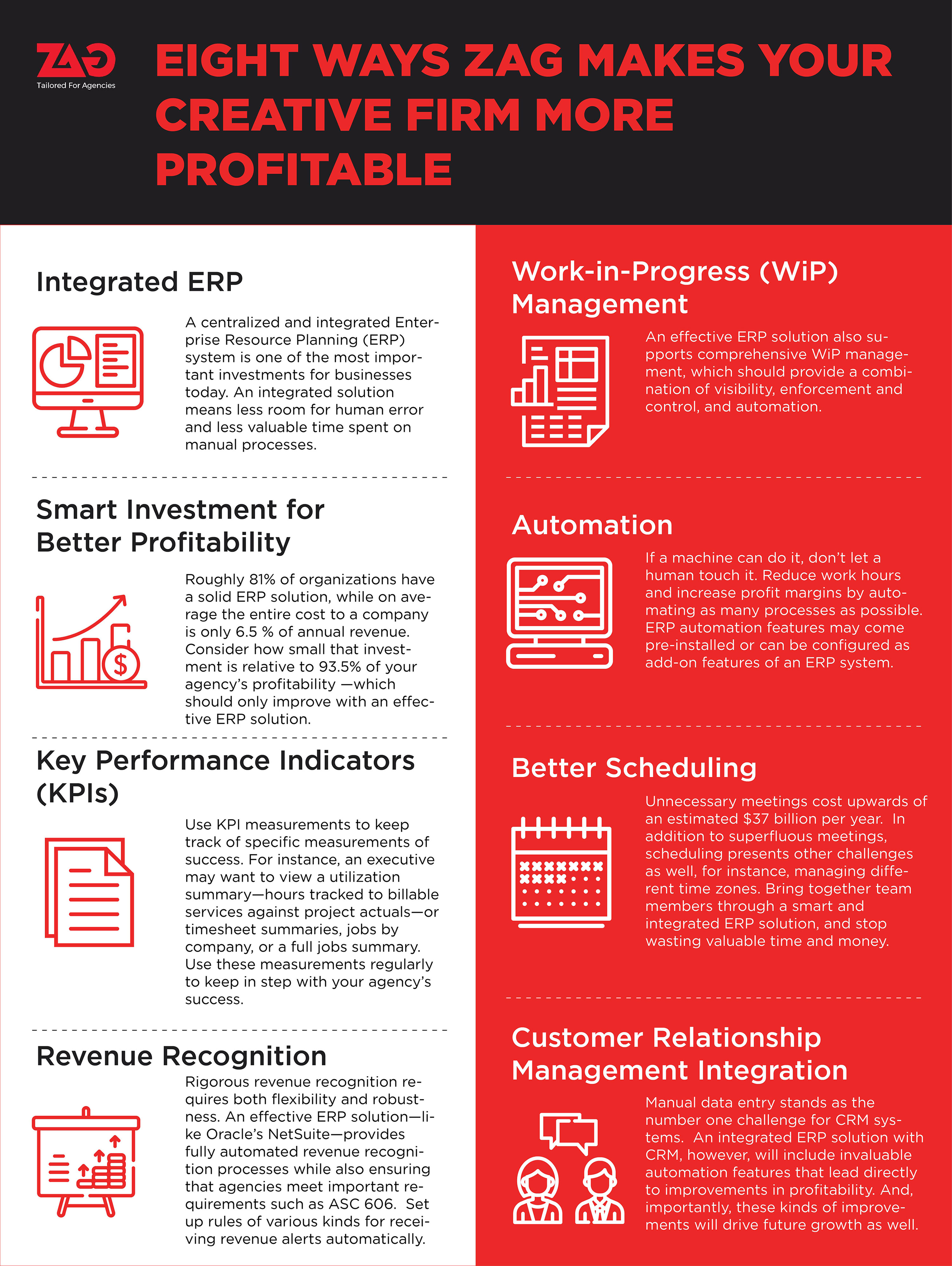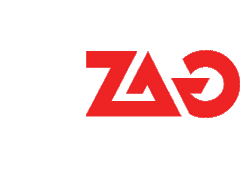
Eight Ways ZAG Makes Your Creative Firm More Profitable
Today, every agency wants to know how they can improve profitability. It is perhaps the most important concern that drives nearly all business decisions. From deciding which projects to prioritize to challenges around resource management, agencies’ central question seems to be: how does it affect our bottom line? Here we’ll outline eight ways the resources at ZAG will not only help to improve your agency’s bottom line, but will help sustain your agency’s growth into the future.
- Integrated ERP. A centralized and integrated Enterprise Resource Planning (ERP) system is one of the most important investments for businesses today. An integrated solution means less room for human error and less valuable time spent on manual processes.[1]
- Smart Investments for better profitability. Roughly [GS1] 81% of organizations have a solid ERP solution, while on average the entire cost to a company is only 6.5 % of annual revenue. Consider how small that investment is relative to 93.5% of your agency’s profitability[2]—which should only improve with an effective ERP solution.
- Key Performance Indicators (KPIs). Use KPI measurements to keep track of specific measurements of success. For instance, an executive may want to view a utilization summary—hours tracked to billable services against project actuals—or timesheet summaries, jobs by company, or a full jobs summary.[3] Use these measurements regularly to keep in step with your agency’s success.
- Revenue Recognition. Rigorous revenue recognition requires both flexibility and robustness. An effective ERP solution—like Oracle’s NetSuite—provides fully automated revenue recognition processes while also ensuring that agencies meet important requirements such as ASC 606.[4] Set up rules of various kinds for receiving revenue alerts automatically.[5]
- Work-in-Progress (WIP) Management. An effective ERP solution also supports comprehensive WiP management, which should provide a combination of visibility, enforcement and control, and automation.[6]
- Automation. If a machine can do it, don’t let a human touch it. Reduce work hours and increase profit margins by automating as many processes as possible. ERP automation features may come pre-installed or can be configured as add-on features of an ERP system.[7]
- Better Scheduling. Unnecessary meetings cost upwards of an estimated $37 billion per year.[8] In addition to superfluous meetings, scheduling presents other challenges as well, for instance, managing different time zones. Bring together team members through a smart and integrated ERP solution, and stop wasting valuable time and money.
- Customer Relationship Management (CRM) Integration. Manual data entry stands as the number one challenge for CRM systems.[9] An integrated ERP solution with CRM, however, will include invaluable automation features that lead directly to improvements in profitability. And, importantly, these kinds of improvements will drive future growth as well.
June 7, 2018
in ERP, Uncategorized
No Comments
